
.
Transport : River and Irish Ferries.
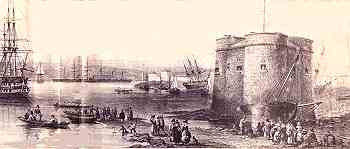
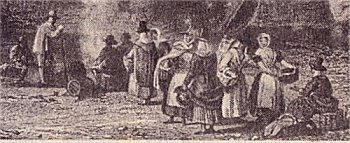

The area around the Front Street slipway - the "hard", built by the naval authorities
in 1827, became an important ferry landing place. Market traders and Dockyard
workers from up and down the river could alight a short walk from their
destinations. Cargo boats loaded and unloaded here. The area's original ferry
continued running at "the passage" - Pembroke Ferry.
Another rowing boat ferry ran between Bentlass and Pennar, carrying Dockyard workers and farmers' wives going to market. On a stormy day in 1889 the boat
capsized, drowning ferryman John Jones and his eight passengers - mostly women. Mrs Phillips, a local psychic, had reputedly foreseen this tragedy while in
a trance.
Hobbs Point pier was built for The Irish packet service, which ran there from the 1830s to c.1848. After about 1858, the Admiralty permitted use of the jetty
by rowing boat and steam ferries to Neyland. Ferry boats operators included Captain Thomas Jackson, Mr John Henry Coram and Mr Fred Hitchings. The
County Council also became involved, operating the service from the 1950s on.
The paddle vessels Lady Magdalen and Alumchine ran from the 1930s to the 1950-60s, carrying both pedestrians and vehicles. After one air raid in 1941 the
boat, for a few days, prudently followed a minesweeper across the Haven. The later boats, Cleddau King and Cleddau Queen, were both built in Pembroke
Dock at Hancock's Yard, and operated until the Haven Bridge opened in 1975.
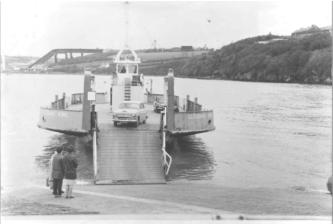
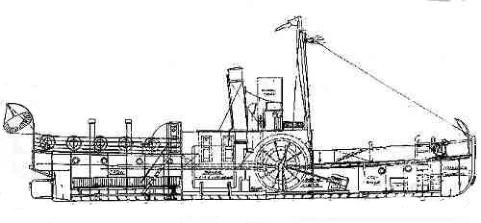
The faithful paddle-steamer Alumchine ferried pedestrians and vehicles between
Hobbs' Point and Neyland. Note her steam piston mechanism. She was broken up in
1962.
More than a century after steamers ceased leaving Hobbs Point for Ireland in the 1840s, Pembroke Dock again lies on the Irish ferry route. The terminal,
since 1979, has been in the Dockyard.
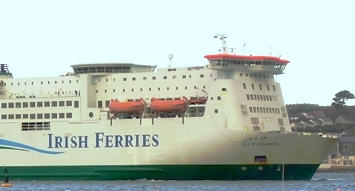
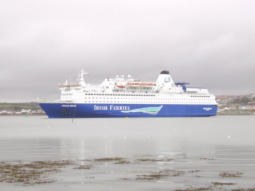
(Sources: Mason 42, 90-94; Peters 32; Phillips, Day of disaster ; Oral source; Davies, D. 124-7; Richards 1983 69; PDMT articles )
Pictures by courtesy of: Front Street Hard, Western Telegraph - Alumchine, Pembrokeshire Record Office & Mr WMD Brace. Moonlightblue Community Services

Transport - Long distance sea transport


Before the railway reached Pembroke Dock, ships provided long distance
transport for passengers and cargo. Advertisements from the 1840s
remind Pembrokeshire Herald readers of schooner space for "Pembroke
Dock", and of steamers calling at "Pater".
The paper's Pembroke Dock shipping news, for just one week in this
period, records thirteen arrivals and six departures. Incoming cargoes
are mostly of timber and coal. Outgoing shipments are of culm (coal),
ballast and general goods.
(Source : PH 1844-1848)

Road Transport
Roads leading to the new town were originally little more than
country tracks.
A "bye way to a few farm houses", was by 1815 carrying much
traffic from Pembroke to Paterchurch. The Mayor of Pembroke
suggested a subsidy, and the Navy Board contributed £ 200
towards "making the road" - today's Top Road, High St, Belle Vue
Terrace and Victoria Road.
From the 1830s, four-horse mail coaches sped along London Road. The route, specified by master road-engineer
Thomas Telford, was from the railway at Gloucester, through St. Clears, past the tollgate near today's Tesco traffic
lights, to the new Irish packet-boat pier at Hobbs point.
George Mason describes the scene as a coach leaves Hobbs Point - "a sight to be remembered, which was of course a
daily occurrence... The townspeople used to assemble to give them a send off, and also to welcome their arrival..".
Despite newspapers, people preferred to hear news "orally ... through the medium of the mail coach drivers and
passengers, who generally collected a fund of information to be distributed at their journey's end".
In the 1850s the news was still arriving by coach - but now at the Victoria Hotel. In Pembroke Dock as in other towns
newspapers were expensive and people often liked to listen in groups rather than read alone. Mrs Peters describes how
"one of these coaches brought a newspaper every week ... Alderman Hughes used to stand on the steps of the Clarence
Inn and read the paper to the people who congregated there for the purpose of hearing it every Sunday. During the
Crimean War a crowd collected long before the arrival of the coach on the newspaper day, anxious to hear the latest
news". (Many soldiers had left friends, families and loved ones in Pembroke Dock). Coachmen enjoyed their work and
Mr Bramble, who drove on the Pembroke Dock route, was so depressed when the railway put him out of business that
he hanged himself in a stable at Tenby.
The train replaced the stage coach for long-distance journeys, but another kind of coach still runs along London Road
and other local routes. Small buses now operate where, in the days before widespread car ownership, a substantial
fleet of Silcox double deckers provided everyday public transport.
(Sources: Gibbs; Peters 34-5; Archer; Rose, J 84; Williams, Rebecca 181-23; Mason 38-9, 83; Hogg, Lost PD)
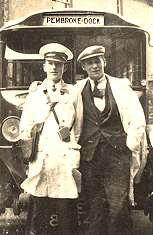
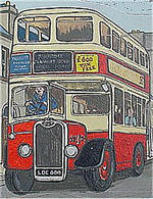
Pictures by courtesy of: Pembrokeshire Herald material, Pembrokeshire Record Office - buses, private collection & Mr George Lewis.
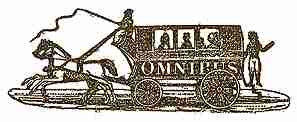

Transport-Railways

The Pembroke and Tenby Railway reached Pembroke Dock in 1864. J.P. Morris notes that celebrations included a procession, band, fireworks and a banquet
in the Victoria Hotel.
This line later connected with the Carmarthen & Cardigan Railway, becoming part of Great Western Railways in 1896. At Pembroke Dock in the 1870s, tracks
for goods traffic to the Dockyard and the New Pier were added (the Admiralty bought the Dockyard extension line in 1891). A turn table and engine shed
were also built, and Pembroke Dock became an important point for passenger and goods traffic.
Cinema pioneer Wiliam Haggar used shots taken near Pembroke Dock station in one of the first Welsh silent films. The original building, dating from 1865,
now houses the Station Inn.
Mr G. J. Davies's website offers railway reminiscences, and further details
(Sources: Peters 45; Morris, P&T Railway 9-10, 18; Macdermot, 215-216, 335; Hogg, Lost PD)
Pembrokeshire Herald advertisement (1862) by courtesy of Pembrokeshire Record Office.
The Cleddau King at Hobbs Point : Note the collapsed
bridge in the background

TOP
HOME
(Amendment, updates and additions) (AJ) Anndra Johnstone
This site is designed, published and hosted by CatsWebCom Community Services © 2018 part of Pembroke Dock Web Project






























